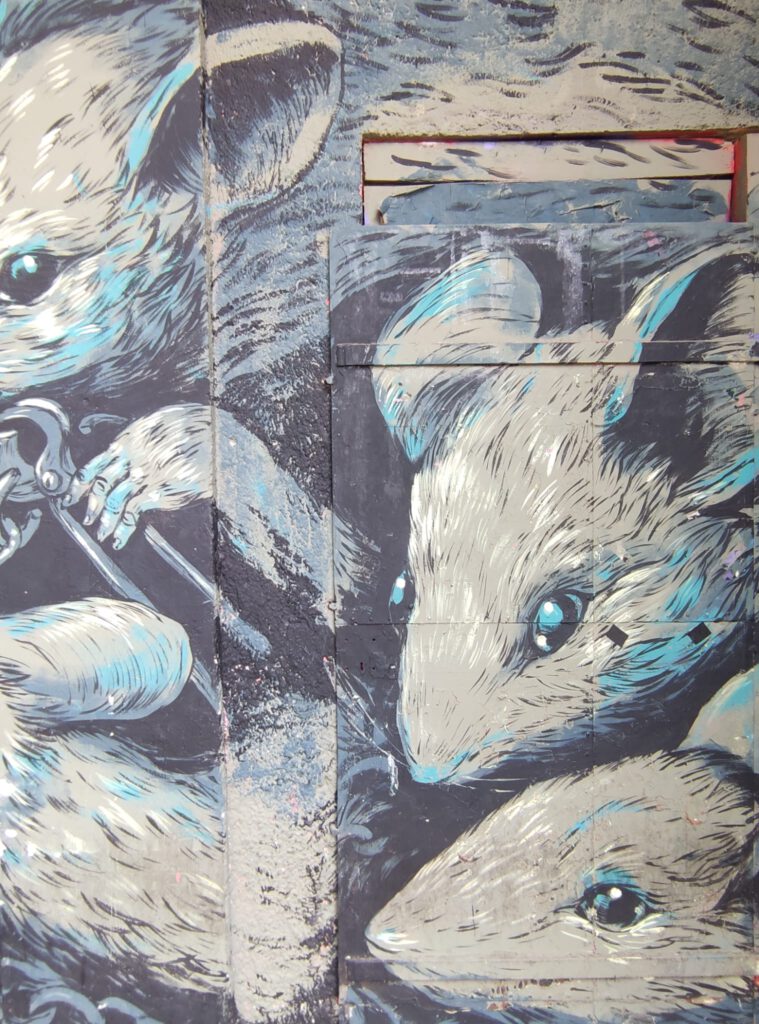Mice Graffiti: Urban Art with a Whimsical Twist
Mice graffiti is a captivating subgenre of street art that brings a touch of whimsy and imagination to urban environments. Featuring adorable and often mischievous depictions of mice, this style adds a playful element to cityscapes and engages viewers with its charm and creativity. This article explores the world of mice graffiti, its artistic appeal, notable examples, and its impact on contemporary street art.
What is Mice Graffiti?
Mice graffiti is a form of street art that centers around the depiction of mice in various artistic styles. This genre combines the playful nature of these small creatures with the bold and expressive medium of graffiti. Mice graffiti can range from simple, cartoonish renditions to intricate and detailed portrayals, often infused with humor or social commentary.
Characteristics of Mice Graffiti
- Playful Imagery: Mice graffiti is known for its whimsical and often humorous depiction of mice. Artists create lively and engaging characters that bring a sense of fun and light-heartedness to their work.
- Varied Styles: The style of mice graffiti can vary widely, from simple, cartoon-like illustrations to more detailed and realistic portrayals. Artists may use different techniques to highlight the personalities and scenarios involving their mouse characters.
- Urban Integration: Mice graffiti often incorporates elements of the urban environment, such as blending the characters with architectural features or using city landscapes as backdrops. This integration helps the artwork feel connected to its surroundings.
- Narrative Elements: Many mice graffiti pieces include narrative or thematic elements, such as storytelling through sequences of images or commentary on urban life. These narratives add depth and context to the artwork.
Techniques and Methods
1. Stencil Art
Stencil art is a common technique in mice graffiti. Artists create stencils of their mouse designs and apply them to surfaces using spray paint. This method allows for precise and consistent depictions of the mouse characters.
2. Freehand Painting
Some artists prefer to paint their mice graffiti freehand, using spray paint or brushes to create detailed and unique artworks. This approach allows for more spontaneity and creativity in the depiction of the mice.
3. Mixed Media
Mice graffiti can also incorporate mixed media elements, such as incorporating stickers, posters, or other materials into the artwork. This adds texture and dimension to the graffiti, enhancing its visual appeal.
4. Interactive Elements
Interactive elements, such as incorporating three-dimensional aspects or integrating the artwork with the environment, can make mice graffiti more engaging. Artists may use these techniques to create a more immersive experience for viewers.
Notable Examples and Artists
Several artists have gained recognition for their work in mice graffiti, contributing to its popularity and impact:
- Banksy: Known for his politically charged street art, Banksy has included playful mouse characters in some of his pieces, combining humor with social commentary.
- Blek le Rat: Often considered a pioneer of stencil graffiti, Blek le Rat’s work includes various characters, including mice, depicted with intricate stenciling techniques.
- Nina Chanel Abney: Abney’s work, while not exclusively focused on mice, often includes whimsical and vibrant characters that share a playful spirit with mice graffiti.
Impact on Art and Culture
Mice graffiti has made a significant impact on both the art world and popular culture:
- Cultural Appeal: The whimsical nature of mice graffiti resonates with a wide audience, making it accessible and enjoyable for people of all ages. It adds a touch of joy and creativity to urban spaces.
- Artistic Innovation: The playful and varied styles of mice graffiti showcase the versatility of street art. Artists experiment with different techniques and narratives, pushing the boundaries of traditional graffiti.
- Community Engagement: Mice graffiti often engages local communities, fostering a sense of connection and pride. By brightening up public spaces with charming artwork, artists contribute to the cultural enrichment of their neighborhoods.
Challenges and Considerations
- Legal Issues: Graffiti, including mice graffiti, can face legal challenges related to vandalism and property rights. Artists must navigate these issues and seek permission when necessary.
- Preservation: The durability of graffiti can be affected by weather and other environmental factors. Maintaining and preserving mice graffiti requires ongoing effort to ensure its longevity and visual impact.
Conclusion
Mice graffiti offers a delightful and imaginative approach to street art, infusing urban environments with charm and creativity. Through its playful imagery, varied styles, and engaging narratives, mice graffiti captivates viewers and enriches the cultural landscape. As this art form continues to evolve, it remains a testament to the power of street art to bring joy and artistic expression to public spaces.enthusiasts.
